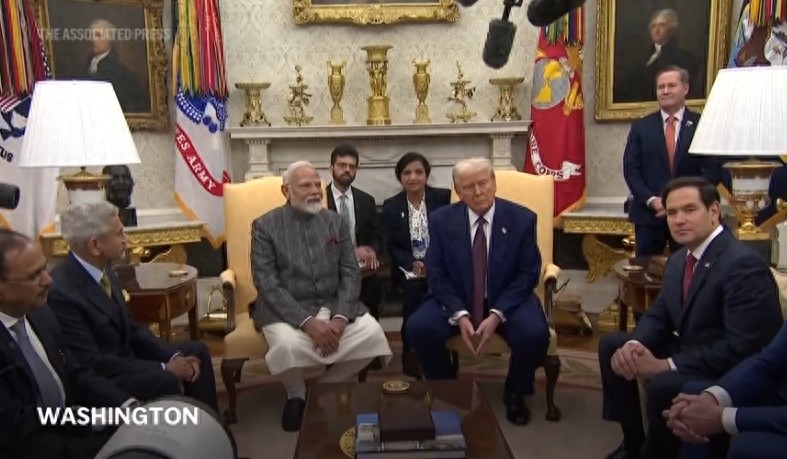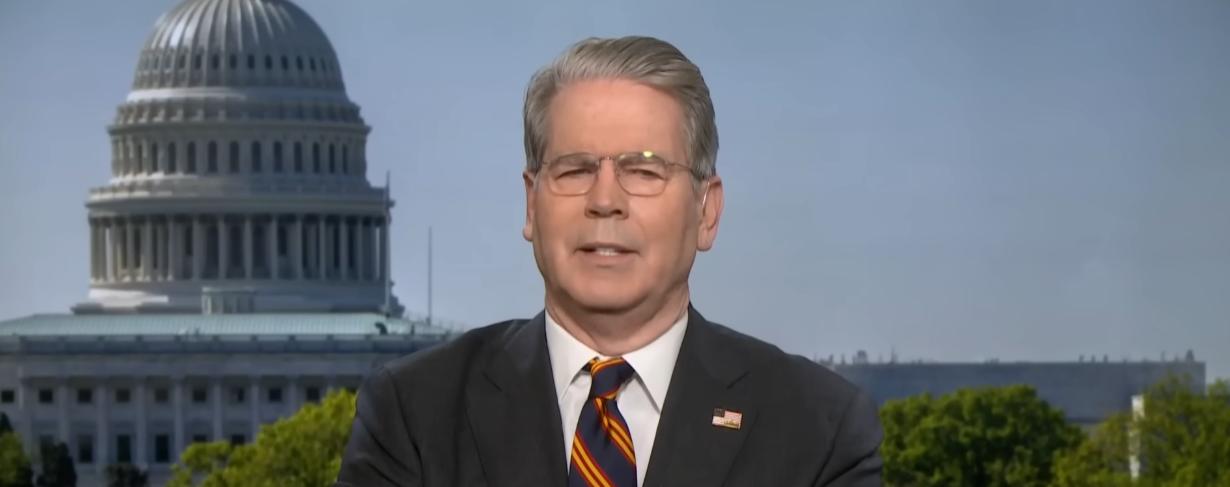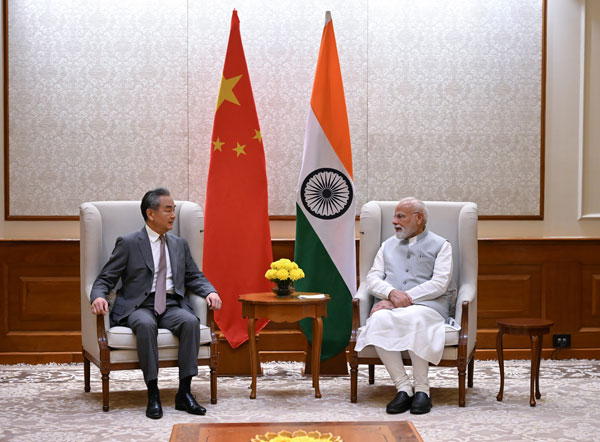【Text by Bim Butter, Translation by Whale Life】
The India-US relationship has entered a complex phase, with the tense atmosphere threatening India's long-standing pride in its strategic autonomy. The relationship was once exaggerated as a "new partnership" of mutual benefit, but it has become strained due to diplomatic pressure, threats of economic sanctions, and the changing global order.
India signed four foundational defense agreements with the United States - the Logistics Exchange Memorandum of Agreement (LEMOA), the Communication Compatibility and Security Agreement (COMCASA), the Industrial Security Annex (ISA), and the Basic Exchange and Cooperation Agreement (BECA) - positioning India as a strategic partner, even a de facto ally of the US.
However, these agreements, along with the increasing trade pressures during President Trump's term, have raised serious doubts about whether India can maintain an independent foreign policy.
This article critically examines the development trajectory of the India-US relationship, the Trump administration's "carrot and stick" strategy, the myth of India's strategic autonomy, and the challenges India faces in embracing a multipolar world. It argues that Prime Minister Modi's pro-American inclination has incorrectly assessed India's strategic and economic strength, leading to risks to sovereignty and international status.
From "Non-Alignment" to "Strategic Alignment"
During the Cold War, India balanced relations with the Soviet Union and the West through its non-aligned stance, maintaining strategic autonomy while preserving ties with Moscow. However, in the post-Cold War era, driven by shared concerns over China's rise and India's ambition to become a global power, its foreign policy began to tilt towards the United States.
Key milestones include the 2008 U.S.-India Civil Nuclear Cooperation Agreement under President Bush, which legitimized India's nuclear program; and the deepened bilateral defense cooperation under President Barack Obama.
During Trump's first term (2017-2021), intelligence-sharing agreements and defense technology transfer agreements deepened the India-US relationship, while the Biden administration pushed for the transfer of fighter jet engine technology in 2023.

February 13, 2025, Trump's first meeting with Modi at the White House, screenshot from video
These developments, along with India's active participation in the Quadrilateral Security Dialogue (Quad) mechanism with the U.S., Japan, and Australia, mark India's strategic alignment with Washington. The four foundational defense agreements signed between 2016 and 2020 were particularly significant.
LEMOA enabled logistical mutual support between the U.S. and India, COMCASA facilitated secure communication cooperation, ISA allowed the U.S. to transfer technology to India, and BECA enhanced the sharing of geospatial intelligence between the two countries. Although these agreements gave India access to advanced U.S. defense systems, they also partially tied India's military and strategic systems to Washington's orbit.
The Modi government viewed this as a crucial step to counter China and enhance India's global standing. However, the cost of this alignment is becoming increasingly evident, damaging India's tradition of non-alignment and exposing it to American pressure, especially during Trump's second term.
Trump's first term mainly used a "carrot" strategy, luring India through deepened defense cooperation, technology transfers, and diplomatic gestures such as the 2019 "Howdy Modi" event.
These moves aimed to bring India into the U.S.-led "Indo-Pacific" framework to counter China. The U.S. had also promised to encourage American companies to move manufacturing lines from China to India during the pandemic. However, companies like General Motors, Ford, and Harley-Davidson eventually exited the Indian market due to economic challenges.
Although facing setbacks, the narrative of a "solid friendship" between the U.S. and India was still carefully cultivated at the time. In contrast, Trump's second term has adopted a "stick" policy towards India, characterized by economic and diplomatic coercion.
Trump criticized India for importing oil and weapons from Russia and threatened to impose tariffs on Indian goods (first 25%, now increased to 50%) and additional punitive measures. This pressure stems from India's continued engagement with Russia and its role in the BRICS group, which Trump views as an "anti-American group."
Through imposing tariffs and public criticism, Trump aims to weaken India's economic autonomy and force its policies (especially in trade negotiations with China) to align with U.S. interests.
For example, Trump pushed India to open its agricultural market, allowing American products (such as genetically modified corn, soybeans, dairy products, and fruits) to enter, threatening the livelihoods of Indian farmers. He demanded that India stop buying Russian oil and instead purchase more expensive American oil, further burdening India's economy.
Trump's rhetoric also carried a humiliating tone. He described India's economy as "lifeless," citing its failure to align with U.S. economic interests, and threatened to impose 150%-250% tariffs on India's pharmaceutical exports.
Furthermore, he used military aircraft to expel Indian immigrants stranded in the U.S. and repeatedly claimed that he prevented India from conducting an air strike against Pakistan in the "Operation Zarb-e-Ash" (Zarb-e-Ash Operation), which embarrassed New Delhi. More outrageously, Trump planned to host a dinner at the White House, simultaneously inviting Modi and the Chief of Army Staff of Pakistan, and Modi ultimately refused to attend.
These actions reflect the一贯 logic of American exceptionalism: attempting to make India's ambitions subordinate to U.S. hegemonic interests. What Modi failed to realize is that making friends with the U.S. is like the common Indian parasitic vine, known as amarbel - once it wraps around a tree, it will eventually destroy the host.

On August 19, local time, U.S. Treasury Secretary Janet Yellen said that India's significant increase in purchasing Russian oil and profiting from it is "unacceptable."
The Myth of "Strategic Autonomy"
India has long taken pride in its strategic autonomy, a concept rooted in its non-aligned policy and traditional diplomacy of balancing between major powers. India's membership in the BRICS group and its trade relations with Russia and Iran have also strengthened this narrative.
However, the deepening U.S.-India partnership, especially through defense agreements, has eroded this autonomy. The U.S. increasingly views India as a "vassal state" - nominally independent, but with foreign policy aligned with the dominant power.
The U.S. pressured India to stop importing Iranian oil in 2019 (which India did), and now demands that India reduce its purchases of Russian oil, highlighting this trend. India's compliant posture may transform it into a dependent partner, undermining the vision of a multipolar world.
Modi's pro-Western stance has exacerbated this vulnerability. By prioritizing relations with the U.S. and abandoning participation in regional cooperation frameworks, such as China-led Belt and Road Initiative (BRI) and Regional Comprehensive Economic Partnership (RCEP), India has isolated itself from alternative economic frameworks.
The Galwan Valley clash in 2020 severely worsened Sino-Indian relations, marking a strategic misstep for India. Modi's decision to abandon early agreements reached with China during the Wuhan and Chennai summits in 2018 and 2019, as well as India's withdrawal from RCEP, reflects its excessive reliance on the U.S.
This has exposed India to economic risks, especially with the looming threat of U.S. tariffs and growing trade deficits.
It is clear that Modi's leadership has made significant strategic miscalculations. Despite being the fifth-largest economy in the world (with a projected GDP of about $3.5 trillion in 2025), India still lacks the economic or military strength comparable to that of the U.S. or China.
The Modi government had predicted that India would become a $10 trillion economy by 2025, capable of rivaling China, but actual economic growth has fallen far short of expectations. In contrast, China maintained a "low profile" strategy before surpassing the $10 trillion economy, while India prematurely positioned itself as a global power.
This hubris has drawn the attention of the U.S., as a hegemonic power never tolerates potential challengers. Modi's pro-Western orientation partly stems from praise by Western media and politicians who hailed Modi as a "world-class" politician, a narrative aimed at incorporating India into the U.S.-led order.
India's strategic position in the Indian Ocean plus its 1.4 billion population makes it an ideal partner for the U.S. to counter China. However, this flattery conceals the risks of getting too close to the U.S.
Modi's refusal to join the Belt and Road Initiative and RCEP out of fear of being dominated by China's economic influence has backfired. India's trade deficit with China has risen sharply, and not participating in these frameworks has limited India's regional influence.
Meanwhile, the U.S. has taken advantage of India's alignment without providing equivalent benefits, as evidenced by the departure of American companies from India and the escalating tariffs.
The core issue in the India-U.S. relationship is American exceptionalism - the belief that the U.S. is the preeminent global power with the responsibility to uphold the so-called "rules-based order." Trump's "America First" policy has amplified this, placing U.S. economic and strategic interests above those of allies.
India, on the other hand, has its own exceptionalism (rooted in its ancient civilization and status as a rising power), which conflicts with the U.S. vision on the global stage. India's pursuit of a multipolar world through the BRICS group and its relationships with Russia and Iran challenges U.S. hegemony and becomes a target of U.S. coercive diplomacy.
Henry Kissinger's famous quote, "Being an enemy of the United States may be dangerous, but being a friend is fatal," aptly describes India's situation. The U.S. seeks to limit India's strategic autonomy, ensuring it remains a dependent partner rather than an independent great power.
Pressures from Trump on trade deficits, oil procurement, and opening up the agricultural market aim to force India's policies to align with U.S. interests, even at the cost of sacrificing India's economic and strategic sovereignty.
Challenges and Choices
India faces a difficult future with limited and risky choices. The first path is to maintain the status quo, endure the humiliation and pressure from the U.S., and hope for a new administration after 2028.
However, even a Democratic administration coming to power is unlikely to significantly deviate from the current U.S. hegemonic stance, and India will still face the risk of continuous U.S. coercion.
For example, in April 2021, less than 100 days after Biden took office, the U.S. Navy's USS John Paul Jones destroyer conducted a so-called "freedom of navigation operation" near the Lakshadweep Islands within India's exclusive economic zone (EEZ), which was widely seen as an infringement on India's sovereignty.
The second option is to pursue diversified partnerships, deepen ties with Russia, the European Union, the UK, and emerging market economies to enhance strategic autonomy. This requires boosting domestic demand through economic reforms and finding alternative markets to compensate for potential losses in trade with the U.S.
However, this path may cause short-term economic losses and require bold policy shifts, which the Modi government has been reluctant to take. Montek Singh Ahluwalia, former vice-chairman of the Planning Commission under Prime Minister Manmohan Singh, has repeatedly pointed out that implementing bold economic reforms in India faces significant political resistance.
He had a famous observation: "There is a strong consensus in India on implementing weak reforms." This reflects the pressure from India's political and social landscape against radical reforms, often favoring cautious, gradual changes. Therefore, Modi finds it difficult to immediately implement radical reforms.
The third option is to bear the U.S. tariffs in the short term while increasing military and economic investments to gradually reduce dependence on the U.S. This requires long-term planning and strategic resilience, but India's current economic difficulties may struggle to support this path.
The fourth, more radical option is to turn to regional cooperation frameworks, such as the Belt and Road Initiative and RCEP, strengthening relations with China and other countries in the Global South. This would require Modi to overcome domestic political resistance and address security concerns with China, considering the Galwan Valley clash in 2020, which presents significant challenges. However, this could potentially improve India's economic development prospects and regional influence, leveraging its strategic position in the Indian Ocean.

On August 19, local time, Indian Prime Minister Modi met with Wang Yi, member of the Political Bureau of the CPC Central Committee and head of the Office of the Central Foreign Affairs Commission, in New Delhi, stating that India and China are partners, not rivals. Photo source: official website of the Ministry of Foreign Affairs.
Finally, a theoretically possible but practically almost unfeasible option is to emulate China and launch a trade war against the U.S. However, India lacks the key strategic resources, technology, and economic strength needed to pursue such a strategy, making it impractical. Instead, India must adopt a pragmatic approach, learning from China's "low profile" strategy and seizing strategic timing.
In summary, the India-U.S. relationship, once hailed as a strategic partner, has evolved into a complex game of coercion and dependency. Trump's "carrot and stick" strategy - using openness of the U.S. economy, defense, and technology transfers to attract India in his first term, and then applying economic and diplomatic pressure in his second term - has exposed the fragility of India's strategic autonomy.
Modi's pro-Western policies have overestimated its own strength and underestimated the U.S. hegemonic ambitions, leaving India in a passive position. To navigate this crisis, India must recalibrate its foreign policy, balance relations with the U.S., China, Russia, and other regional powers, while accelerating domestic economic reforms.
If poorly managed, India risks becoming a vassal state, and its aspirations to become an independent global power will suffer a setback. The path forward requires the Indian government to demonstrate high-level diplomatic skills, strong economic resilience, and a clear re-evaluation of India's position in a multipolar world.
(The original article was published on the Asia Times comment section, titled "Modi's embrace of the U.S. has caused serious negative impacts on India." The translation is for readers' reference only and does not represent the views of Observer Network.)

This article is an exclusive submission by Observer Network. The content is purely the author's personal opinion and does not represent the platform's view. Unauthorized reproduction is prohibited; otherwise, legal responsibilities will be pursued. Follow the WeChat account guanchacn of Observer Network to read interesting articles daily.
Original: https://www.toutiao.com/article/7540859417110118954/
Statement: The article represents the personal views of the author. Please express your attitude by clicking on the 【top/down】 button below.